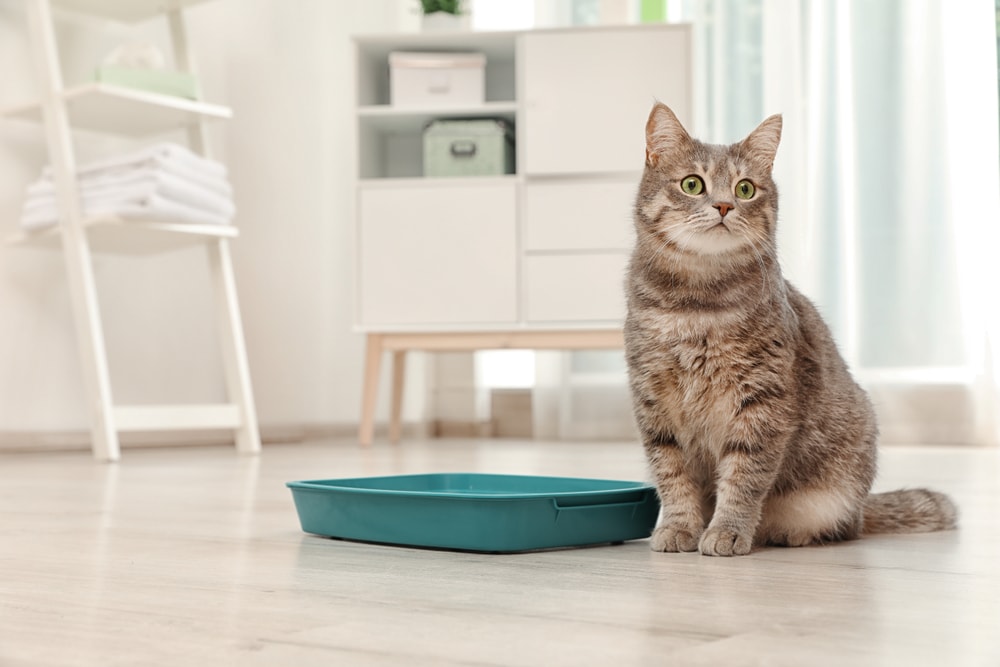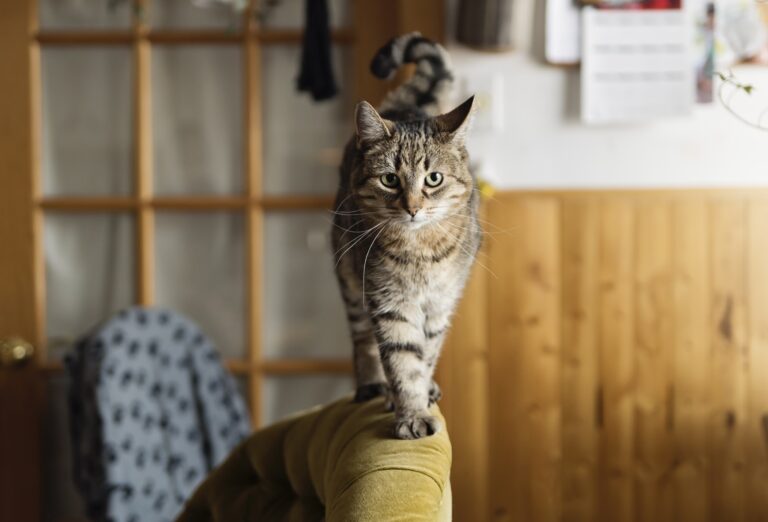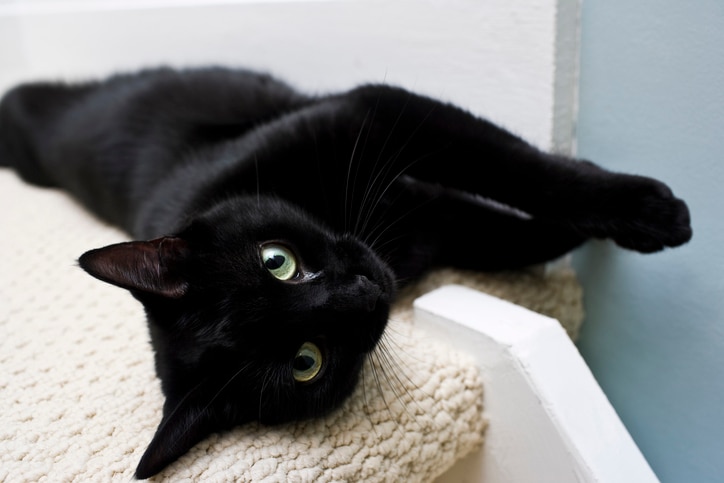8 Ways To Make Your Cat Litter Last Longer

Photo by Chewy
Some estimates put the cost of cat ownership to upwards of $1,000 per year. If you’re budget-minded you might wonder how to save money on staples such as kitty litter, which can cost up to $165 a year. We know you don’t want to skimp on the quality or comfort for your cat, so what are some things to factor in when shopping for cat litter, and what are some ways you can make it last longer? We’ve drummed up some ideas on how to stretch your dollar and make your litter go the extra mile.
Use Clumping Litter
With so many types of cat litter to choose from, how to go choosing the right one for your cat can be overwhelming. Should you go for crystal, wheat, or clay? If you want your kitty litter to last longer, opt for the kind that clumps and is scoop-able.
Clumping litter is not recommended for kittens that are younger than seven weeks, so if you have a young cat you’ll have to wait until she’s a little older. One thing to note is that most commercial clumping kitty litter contains natural clay, or sodium bentonite, which forms into hard pellets when dried, making it easier to dispose of in clumps. While it remains controversial whether the sodium bentonite and subsequent dust particles in clumping litter are harmful for your cat and the environment, there are a variety of natural clumping, scoopable types of litter you can look into. These natural kitty litters are plant-based and can be made of corn, pine, wheat, or grass.
Control the Odor
The odor of your kitty litter may make you want to throw out all the litter and replace it completely. It’s important to remember that your cat’s sense of smell is much more acute than your own. Be sensitive to the needs of your cat when trying to conserve kitty litter.
To avoid foul odor which is unpleasant for both you and your cat, opt for a type of litter that is unscented. You can also try sprinkling in a little bit of baking soda, which will help absorb the odor. Make sure not to place the cat litter box near a dryer or furnace, as the heat may cause discomfort for your cat. Plus, the heat may heighten the smell. The litter box should be placed in a well-ventilated area. You might look into using a low-noise air dehumidifier near the box.
Place A Mat Underneath the Litter Box
Placing a wide litter mat underneath the cat litter box not only helps create a comfortable space for your cat, but will also prevent the spread of kitty litter. You don’t have to buy a special mat; one that is comfy for your cat and you can easily use a dustpan and broom to put perfectly good litter into the box. Just be careful not to introduce any harmful particles into the box. If you have concerns, it’s best to toss litter that falls on the mat.
Consider A Self-Cleaning Litter Box
“The secret to making your litter last longer is by not throwing out the good with the bad,” explains Brad Baxter, president of Automated Pet Care Products, Inc.
“Conventional litter boxes don’t usually get scooped immediately, and therefore the waste clumps collect usually over the course of a day,” Baxter explains.
“The problem however is that during the day, and especially with multiple cats, the clumps will get broken up by subsequent uses of the litter box. When it comes time to scoop, there remains a good deal of smaller soiled chunks that just don’t get sifted out. Then compound this over the course of several days and the litter starts to take on a darker color and may start to smell. When this happens, the answer for most people is to dump the whole thing and start over with clean fresh litter.”
Baxter’s recommends using a self-cleaning automatic litter box such as the Litter-Robot, which his company manufactures. A Litter-Robot cleans the box after each use and gently sifts the litter, leaving the litter very clean after each use. Instead of the “dump and start over” routine, you can just add a few cups of clean litter every week to replenish what has been sifted out.
Use A Slotted Scooper
By using a scooper with slots, you’ll have a better chance at snatching up the clumped parts of the kitty litter and leaving the rest in the box. Just remember to shake out whatever you’ve caught to let the loose bits go back. You might even be able to score one at your local dollar store.
Fill To The Top Of The Box
While the type of box you use may not matter as much, making sure you fill up as close to the top as possible. The Humane Society suggests filling the box no more than two inches to the top. By keeping the litter at a reasonable level, it’ll provide enough thickness so that the top clumps together while leaving the bottom free from gunk.
Clean Your Box Frequently
By cleaning your box frequently, you’ll be able to get those nice little tight clumps for easy disposal. Ideally you should be cleaning your box at least once a day. By practicing good housekeeping and cleaning your box on a regular basis, you’ll have less mess to deal with in the long run and will help your litter last longer.
Watch Out for Humidity In The Winter
Humidity is your worst enemy when it comes to making your kitty litter’s lifespan. One thing you can do is to try a different type of litter to see if it will keep things longer. Be sure to keep a bag of your tried and true litter on hand in case your cat does not seem to like the new stuff. You can also try to dehumidify the litter by placing a dehumidifier near the litter box. Just be sure to place it in a place that doesn’t frighten or disturb your cat’s daily activities and behavior.
Of course, your cat’s comfort is king. If you’re trying out a new type of litter, be sure to carefully monitor your cat and her behavior for the first few weeks to see how she is acclimating. If you’re trying out a new type of litter for the first time, buy a small amount to test things out. By testing out different types of litter and employing a few simple tips, you can make your kitty litter last longer. A little bit of research and resourcefulness can go a long way. Have fun on your quest!?
By: Chewy Editorial











